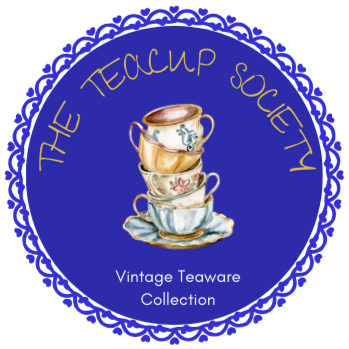The Language of Florals in Vintage Teacups


Two of my favorite flowers!
I always find myself gravitating toward floral teacups when I’m out treasure hunting. They’re elegant, vibrant, and dainty little works of art. There’s something about drinking from such a beautiful cup that instantly makes me feel more sophisticated — as if a simple cup of tea is transformed into a special ritual. Naturally, I began to wonder why so many vintage teacups were decorated with flowers. Roses, violets, daisies, and whole gardens seem to bloom from every shelf — antique shops, flea markets, estate sales. It made me curious about the story behind these designs and what they were meant to convey. Why did blossoms become the most enduring motif in vintage English bone china?
Part of the answer is that flowers were God’s idea first. Long before they were painted on bone china, He clothed the earth with lilies, roses, and wildflowers, each bursting with color and beauty. Teacup artists were simply echoing what He had already made perfect.
A Tradition Rooted in Nature
During the Victorian era, flowers weren’t just pretty — they were a language. Known as floriography, each bloom carried a symbolic meaning. Roses spoke of love, violets whispered modesty, and lilies evoked purity. It’s no wonder that teacup makers like Royal Albert, Shelley, and Rosina wove these motifs into their designs, allowing tea drinkers to sip from symbolism as well as exquisite bone china.
But behind that symbolism is something deeper: every painted petal is a reflection of the Creator’s artistry. One of my favorite Bible verse is Luke 12:27-28, "Look at the lilies and how they grow. They don’t work or make their clothing, yet Solomon in all his glory was not dressed as beautifully as they are. And if God cares so wonderfully for flowers that are here today and thrown into the fire tomorrow, He will certainly care for you. Why do you have so little faith?" Jesus uses flowers, particularly lilies, to teach about God's provision. Just as flowers are clothed in beauty by God, so too are humans cared for by Him. Flowers symbolize God's faithfulness and care for His creation. They are a reminder not to worry about material concerns because God provides for all needs.
Royal Albert’s Garden of Roses
No discussion of floral teacups is complete without mentioning Royal Albert. Their iconic “Old Country Roses” pattern, introduced in 1962, is still one of the most beloved designs in the world. With lush red, yellow, and pink roses, the cup feels like an eternal English garden — yet each rose is a reminder of the living ones God designed first.
This Art Deco Royal Albert teacup decorated with floral panels is worth mentioning because it's one of my favorite finds.
Shelley’s Delicate Blooms
Shelley teacups, on the other hand, are known for their dainty finesse. Their floral patterns often highlight wildflowers — bluebells, daisies, forget-me-nots — with a lightness that makes each sip feel like a walk through the countryside. Their dainty designs echo the fragile elegance of real flowers, each one a quiet nod to God’s intricate detail.
This Shelley floral teacup makes every morning feel like a walk in the garden.
Rosina’s Romantic Charm
Rosina leaned into playful and feminine designs. Roses and violets danced across their cups in cheerful sprays, often framed with scalloped edges or gold trim. These cups invite us to delight in beauty — a small reflection of God’s intent when He filled the world with blossoms to brighten our days.
Take a look at this Rosina chintz floral teacup richly decorated with vibrant roses and wildflowers.
More Than Decoration
Floral teacups do more than decorate a table. They remind us that beauty is both timeless and purposeful. Perhaps your grandmother served tea in a rose-patterned cup, or maybe you found a Shelley daisy teacup that felt like it was waiting just for you. In those moments, the painted flowers connect us to memory, to tradition — and ultimately to the Creator of every bloom.
Closing Reflection:
The next time you cradle a floral teacup, take a moment to notice the blooms. They’re not just painted on fine bone china; they’re a quiet echo of God’s creation, reminding us that He delights in beauty — and invites us to delight in it too.



